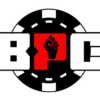In the first two lessons, I gave a few guidelines on how to approach most PLO games. I will now discuss some of the most profitable starting hands in this game and a few suggestions about whether and how to play them.
When reading this, keep in mind that in pot limit mixing up your play is VERY important; some of the easiest opponents to beat are the ones who play in predictable patterns, so fight this tendency in yourself. Some basic knowledge about the value of Omaha hands is assumed for this article. If you are not sure about your hand selection, even in limit Omaha where a few more hands can and should be played, I suggest reading Bob Ciaffone’s “Omaha Hold’em Poker” or take a closer look at Michael Cappelletti’s point count system (I also suggest using Wilson’s software on Omaha poker for that matter).
Having said all this, let’s take a look at some Omaha starting hands and how to play them, before and after the flop.
BIG PAIRS (ACES OR KKA)
A few PLO players use the simple system of raising the pot every time they get aces, regardless of their other two cards. More experienced players often limp in with aces, trying to reraise some preflop raiser in order to win the pot before the flop or to make it a heads up contest, thus maximizing their chances of winning. In the first case, the players doing this basically reveal their hands to everybody and therefore will not get any action after the flop unless they’re beaten. In the second case, most players make this play regardless of their (and their opponent’s) stack size. If the reraise leaves the players with, let’s say, 70 to 75 % of their stacks left, the implied odds for the caller will be huge, since he knows how much he needs to beat the re-raiser, whereas the re-raiser only knows his own hand but nothing about his opponent’s. The preflop caller may flop the nuts or close to it with the aces (or kings) unknowingly paying him off, or the big pair may be (semi-) bluffed out of the pot because of the texture of the board.
Therefore, the “reraise-the-raiser”-strategy is useful only if you can get your opponent all-in or close to it, that is if there’s only enough money left for one bet on the flop*.
When I’m playing a big stack, I try to mix up the way I play my big pairs. Sometimes I raise the pot just like people new to pot limit Omaha often do (when the money is deep, this is often correct strategy), in early position I often make a small raise or use the limp-strategy and just call a raise instead of reraising, however in late position with a high pair quality hand, a pot-building big raise is called for most of the time. If the flop comes favorable to your hand, you may be able to win a big pot or be in
When I’m playing a big stack, I try to mix up the way I play my big pairs. Sometimes I raise the pot just like people new to pot limit Omaha often do (when the money is deep, this is often correct strategy), in early position I often make a small raise or use the limp-strategy and just call a raise instead of reraising, however in late position with a high pair quality hand, a pot-building big raise is called for most of the time. If the flop comes favorable to your hand, you may be able to win a big pot or be in position to protect your hand better, in case you want to win the pot right there and then.*For this strategy you don’t necessarily need aces. Against an overaggressive opponent -beware of limpers-
*For this strategy you don’t necessarily need aces. Against an overaggressive opponent -beware of limpers- kings or even queens with an ace may also do (the ace being very important, because most players will give you credit for three aces when an ace flops and fold their -made- hands, but if they decide to try to make some kind of draw against you, you’ll still have a pair of aces with top kicker which will often be good); you might even try this play with four double-suited high cards if the situation is right.
TWO-PAIR HANDS
Two-pair hands are more valuable with the pairs being close in rank, for example, QQJJ as opposed to QQ77. However, under most circumstances, this second hand is certainly playable (being in position adds some value, as does being suited). I might play hands like these pretty aggressively before the flop, I might even call a reraise with them if the re-raiser is somewhat predictable (and therefore marked with aces) and the money is deep, trying to flop a set and take his entire stack. The reason I play them aggressively is that whenever I flop a set I want to be able to protect it when a straight- or flush draw flops, and to try to get control over the hand. However, if the flop doesn’t help you and may have in fact helped others, just give the hand up. Always keep in mind the REASONS for playing a hand or not; a KKTT hand is virtually always playable, hands like 7733 almost never: this is PLO where you DON’T want to make bottom or even middle set.
RUNDOWN HANDS
Four connected cards (preferably, but not necessarily, suited), when played under the right circumstances, can be a very profitable starting hand. The goal with these hands is to flop a big wrap most of the time (position is very important here; big draws in position make A LOT MORE money than when out of position). If your starting hand is a quality one (for example, QJT9) this means that when the flop is favorable, you will have a two-way hand (for example, two pair and straight draw) or even a three-way hand (if you flopped a flush draw also). Big draws can and should often be played aggressively, depending on what you think you have to beat (and even then, if you are up against a quality made hand like top set, the draw often has a lot of value and might even be the favorite). I like to play the smaller rundowns also (once again, especially in position); I even raise with them preflop occasionally (you might get paid off very well in case you flop something good because opponents figure you for big cards). By doing this I try to mix up my play and add some deception into my game. There are a few players who just love to play these hands, also (and especially) against someone who is marked with aces (they might even call all-in preflop, being only a 3-to-2 dog most of the time). These plays can be dangerous, however, especially if the aces are quality (double-suited) aces and because there are still two unknown cards in the raiser’s hand. Rundown hands may be some of the most profitable hands in PLO if you know how to play them, and if the circumstances are right:
Out of position, these hands (especially the small rundown hands) can prove very costly: whenever you miss your draw on the turn, your opponent may charge you and whenever you hit he might release.
Your best option, when out of position, may, therefore, be to try to go all-in on the flop, which gives you better odds than waiting for the turn, however, you have no chance of winning the pot WITHOUT making your hand (by semi-bluffing your opponent out of the pot).
A hand like 9876 is a lot better than T875, although to many players they seem quite the same and they will, therefore, play them the same way. Always take a close look at where (if any) the gaps in your hand are: JT97 is MUCH better than J987; in the first case you’d be delighted to see an eight flop, but in the second case a ten won’t thrill you as much since higher straight draws might be possible.
A hand like AKQJ may seem like a monster, but isn’t much of a hand if preflop action suggests someone might have AA or if a few tight players have indicated strength.
FINAL THOUGHTS
In PLO, a suited ace or a big pair is worth a lot of course, however with nothing else to go with it these hands are hardly ever profitable. A hand like Ah7h98 is a lot better than Ah7hQ3, because of the possibility of flopping a flush- and straight draw. A hand like QQKJ is much better than QQK7, because whenever you flop a set in the first case you might flop a straight draw also (plus some of the cards your opponents may need to beat you are in your hand), whereas in the second case you will just have the set without much protection.
In some of his books T.J. Cloutier warns against playing “dangler” hands, three cards that fit together plus one that does not. Whenever you start playing for higher stakes, you’ll see it’s often the EXTRA OUTS that make hands profitable; it takes a very good player to turn a less-than-average hand into a moneymaker.
Therefore, if you pick up this beautiful game, selecting only the quality hands we’ve discussed here might not be such a bad idea as well as avoiding the trap hands, because that’s what they will most likely be to you: traps.



